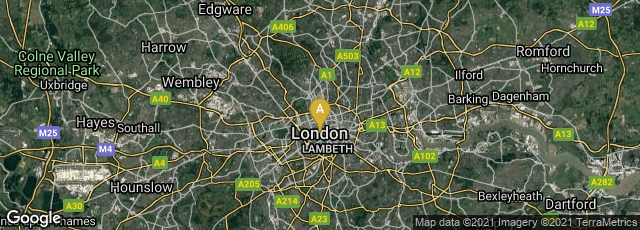In 1849 the publishers were issuing a guide to 49ers traveling to California in the Gold Rush. They must have run out of the wrappers for part 14 of Huish's novel and improvished with this blue wrapper stamped with the title word "Manning" in the upper margin.


A: London, England, United Kingdom
The last "penny dreadful" by the sensationalist English writer Robert Huish, entitled The Progess of a Crime, or the Authentic Memoirs of Marie Manning, of Minver Place, Bermondsey concerned the trial and execution on November 13, 1849 of Marie Manning and her husband for the murder of a visitor to their home. Manning
"was a Swiss domestic servant who was hanged outside Horsemonger Lane Gaol, London, England, on 13 November 1849, after she and her husband were convicted of the murder of her lover, Patrick O'Connor, in the case that became known as the "Bermondsey Horror". It was the first time a husband and wife had been executed together in England since 1700.[2]
"The novelist Charles Dickens attended the public execution, and in a letter written to The Times on the same day wrote, "I believe that a sight so inconceivably awful as the wickedness and levity of the immense crowd collected at that execution this morning could be imagined by no man, and could be presented in no heathen land under the sun."[3] He later based one of his characters—Mademoiselle Hortense, Lady Dedlock's maid in Bleak House—on Manning's life." (Wikipedia article on marie Manning [murderer], accessed 12-2018).
Following the tradition of "penny dreadfuls" published in weekly parts since the 1830s, Huish's novel was issued in 26 parts or fascicules in printed wrappers, with 1 plate in each of 25 parts "executed by artists of the first authority." Typically these novels were bound up from the parts if they were preserved in libraries, or the parts may have been discarded, with the result that sets of parts of most penny dreadfuls have become very difficult to collect. The parts of my set are in both in pink and gray printed wrappers, with part 4 over-printed and re-numbered and part 14 in blue wrappers for another work entirely (Emigrants Guide to the Golden State of California) overprinted in the top margin "14 Manning".
Besides the cost advantages to buyers, who paid 6d per part, an advantage of part publication was that Huish's novel could be written and published between the time that the Mannings were arrested on August 17, 1849, their trial on October 25-26, their execution on November 13, and the aftermath of the publication of Dickens' letter, which was published in The Times, November 14, 1849. Dickens wrote:
"Sir — I was a witness of the execution at Horsemonger-lane this morning. I went there with the intention of observing the crowd gathered to behold it, and I had excellent opportunities of doing so, at intervals all through the night, and continuously from daybreak until after the spectacle was over.
"I believe that a sight so inconceivably awful as the wickedness and levity of the immense crowd collected at that execution this morning could be imagined by no man, and could be presented in no heathen land under the sun. The horrors of the gibbet and of the crime which brought the wretched murderers to it, faded in my mind before the atrocious bearing, looks and language, of the assembled spectators. When I came upon the scene at midnight, the shrillness of the cries and howls that were raised from time to time, denoting that they came from a concourse of boys and girls already assembled in the best places, made my blood run cold. As the night went on, screeching, and laughing, and yelling in strong chorus of parodies on Negro melodies, with substitutions of "Mrs. Manning" for "Susannah," and the like, were added to these. When the day dawned, thieves, low prostitutes, ruffians and vagabonds of every kind, flocked on to the ground, with every variety of offensive and foul behaviour. Fightings, faintings, whistlings, imitations of Punch, brutal jokes, tumultuous demonstrations of indecent delight when swooning women were dragged out of the crowd by the police with their dresses disordered, gave a new zest to the general entertainment. When the sun rose brightly—as it did—it gilded thousands upon thousands of upturned faces, so inexpressibly odious in their brutal mirth or callousness, that a man had cause to feel ashamed of the shape he wore, and to shrink from himself, as fashioned in the image of the Devil. When the two miserable creatures who attracted all this ghastly sight about them were turned quivering into the air, there was no more emotion, no more pity, no more thought that two immortal souls had gone to judgment, no more restraint in any of the previous obscenities, than if the name of Christ had never been heard in this world, and there were no belief among men but that they perished like the beasts.
"I am solemnly convinced that nothing that ingenuity could devise to be done in this city, in the same compass of time, could work such ruin as one public execution, and I stand astounded and appalled by the wickedness it exhibits. I do not believe that any community can prosper where such a scene of horror and demoralization as was enacted this morning outside Horsemonger-lane Gaol is presented at the very doors of good citizens, and is passed by, unknown or forgotten."
Part 2 in my set is missing. Part 1 must be a reprint as it is dated 1850. Besides an illustration, it contains the engraved title page for the complete volume. The set was previously in the library of bibliographer William B. Todd, with a sheet of his notes laid in. Collins, Dickens and Crime, p. 236.